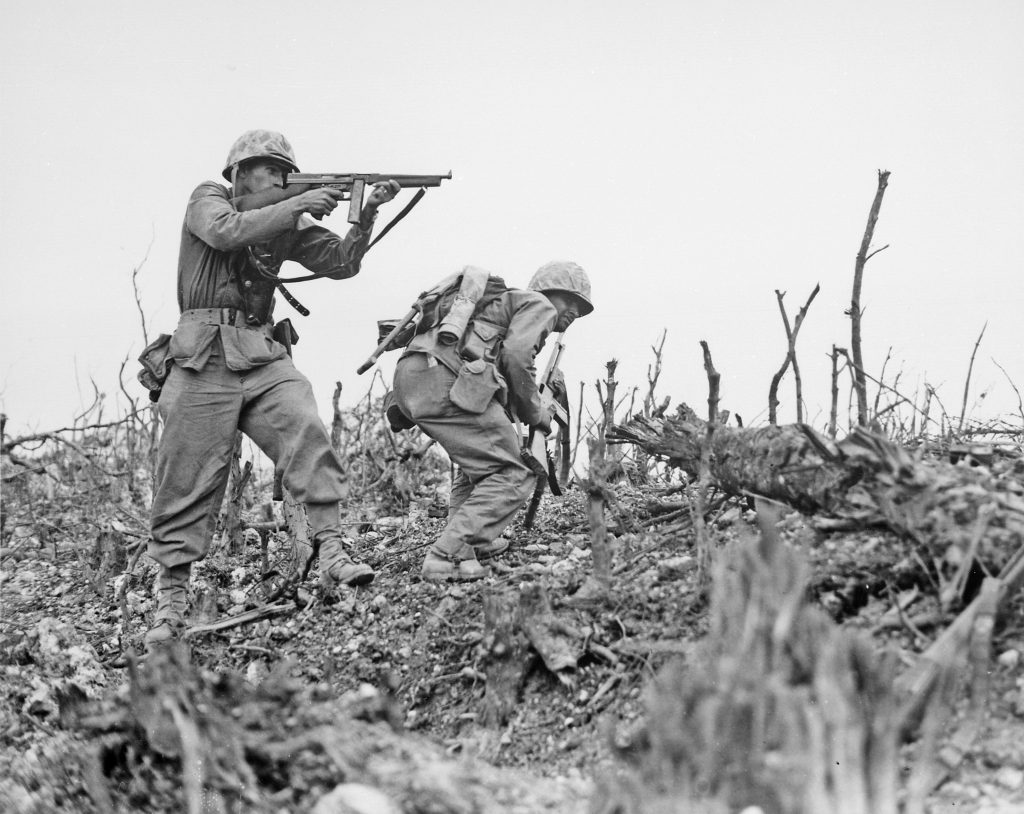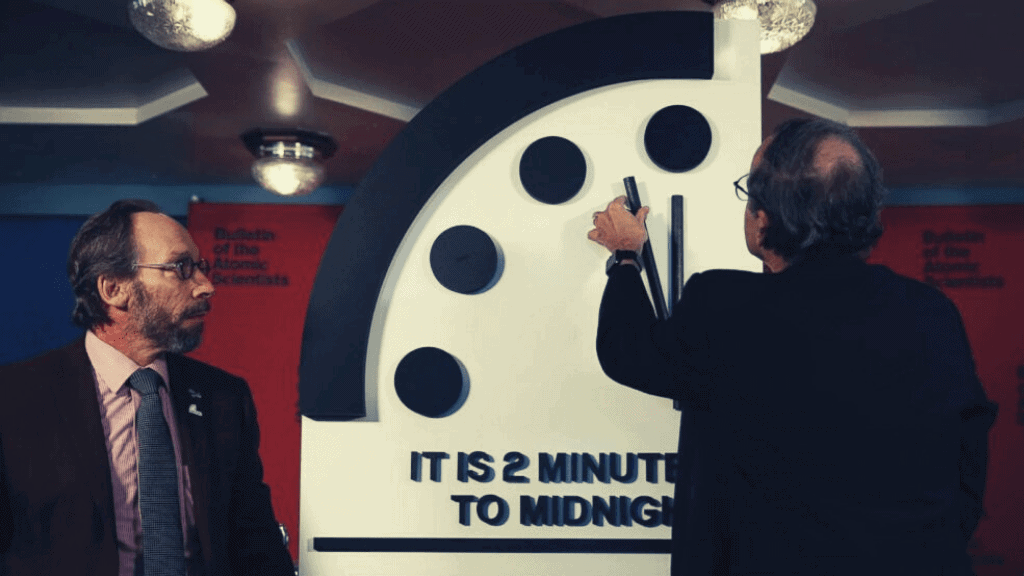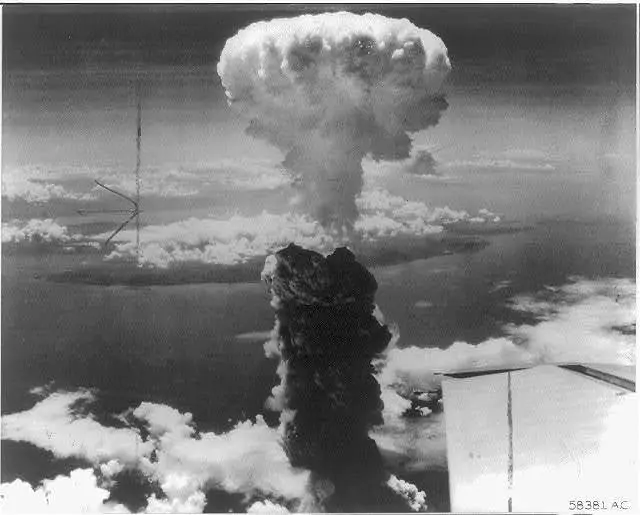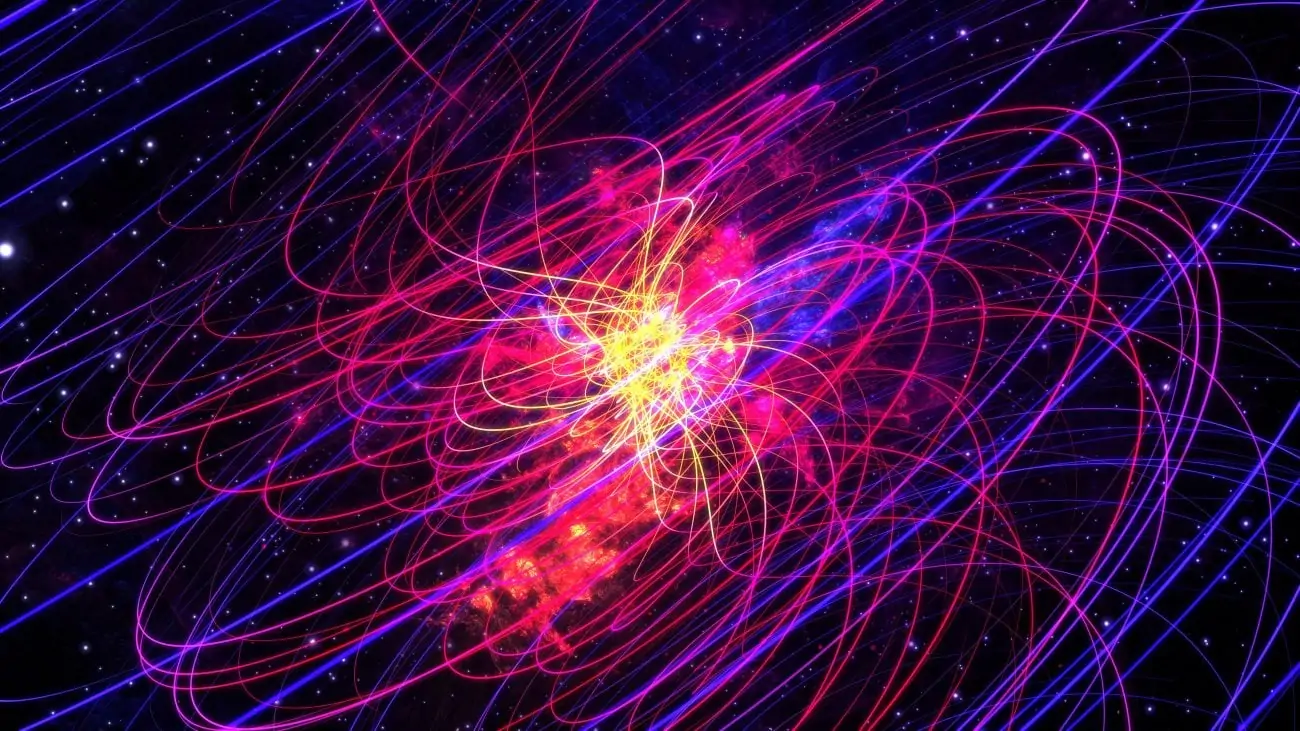Introduction
In many ways the 20th century was a century of unimaginable transformation. On the one hand, it was marked by decolonisation, democratisation, technological innovations, and scientific breakthroughs. On the other hand, it was scarred by unprecedented violence, including the two largest wars in recorded history. Today, there exist a cadre of scientists who take a less balanced perspective. To them, the century was all about progress. Chief among them is the Canadian psychologist Steven Pinker. He claims in his influential 2011 book, The Better Angels of Our Nature, “we may be living in the most peaceable era in our species’ existence”. [1]
The thesis is simple: the world has become less violent over millennia. Six major trends are identified which showcase this decline over varying time scales: while the first three are on the scale of centuries or more, the rest are only a few decades old, all focused on the reformations occurring over the second half of the 20th century. Better Angels is awash with graphics which appear to show a gradual decline in violence. The more notable features of the study include a decline in the frequencies of wars and homicide rates over centuries, a drop in domestic violence, and a fall in child abuse over recent decades.
Perhaps the most alarming is Pinker’s treatment of 20th century military history. While there is much to critique, this piece will be limited to a discussion of some of the key flaws in Pinker’s analysis with regards to violence — in particular in relation to conflicts and wars. If this falls, we see that Pinker’s whole thesis crumbles.
Inflating Violence
Many of us acknowledge that we live in an era characterized by perpetual war, systematic genocides, crippling sanctions, debilitating famines, mass uprisings, gruesome tortures, indiscriminate bombings, chemical warfare, and several near-nuclear confrontations. That this could be thought as peaceful appears dystopian to many of us, even Orwellian doublethink. How is it then, despite the horror, Pinker appears to be in complete denial?
One fix Pinker adopts is to restrict some of the latter trends to the post-1945 world, a period which many have called the “Long Peace”. This is long on the scale of our lives but is certainly not on the scale of grand civilisations. That these ‘trends’ could deservingly be called trends appears tenuous at best.
But there is a deeper reason why the entire 20th century was, for Pinker, a very peaceful one, and it’s mostly to do with ratios.
Pinker asserts that the widely held belief about the 20th century being the bloodiest is merely an illusion of our mind, a trick of our own making. He attributes this trickery firstly to what he calls historical myopia — our inability to recall events in the distant past – and secondly, to our failure to take into account population growth. [2] While violence has certainly exploded, population explosion has been far bigger. Thus the argument goes that when we take into account relative death rates, things look very different.
He justifies this approach by arguing that a number of “absurdities” arise if we focus on absolute deaths. Among them is that, “even if a society’s practices were static, so that its rates of war and violence don’t change, its people would be worse and worse off as the population grows, because a greater absolute number of them would suffer.” [4]
Pinker thus inflates the impact of historical events by employing world population figures at those times. The An Lushan Revolt in the 8th century and the Mongol Conquests in the 13th century reportedly sent 36 million and 40 million to their deaths, respectively. Adjusting to the mid-20th century equivalent, that’s 429 million and 278 million killed, making them, supposedly, the two worst atrocities in all of history, surpassing the Second World War by many folds. [3]
Thus, the Second World War may have been the bloodiest of all time in absolute terms, but it barely makes it in the top-ten list of bloodiest events in relative terms. And because relative proportion is what counts, that means that the Second World War is no longer the bloodiest event in history.

After beholding WW1, WW2, the Communist Gulags and more, Steven Pinker declares moral progress
The Problem with Population Ratios
Here’s the problem with this approach. In a fixed setting, death rates are expressed as a proportion of the number of deaths in a population. To keep death rates down, one must reduce deaths or boost the underlying population. Deaths, however, are not under one’s control, but one is often at liberty to select the underlying population.
For example, homicides tend to be higher in cities than wealthier suburbs or outlying towns. A statistician, commentator, or a psychology professor, cannot reduce the number of homicides that actually took place. But one can, as though by the wave of a magic wand, express a lower homicide rate for the cities. How? By expressing it at a provincial level. By definition, this will include violent cities and peaceful outlying towns. The huge disparity in homicides between the city and the towns will be unrepresented, and the true state of the city would be diluted away. Thus the homicide rate of London can be hidden if we dilute it by presenting the rate for the South of England. London is in South England, here is the South England rate, and there you go — the deaths are largely washed away, counter-balanced by the idyllic Cornish coast. This begs the question: which underlying population is appropriate? The answer isn’t always obvious, and may have more to do with the motivations of the one doing the calculations than the reality on the ground itself.
Pinker may assert that ratios serve as a valid way of measuring risk: overall, it is safer to be alive in the 20th century than the 8th century. But while this may be so in the aggregate, ratios may do more to obscure the underlying situation than convey any meaningful information. To an unsuspecting eye, it suggests that risks are uniformly distributed, leaving a false sense of security that obfuscates the avoidable suffering underlying the numbers.
Take for example Dystopia, an imaginary city of one million people with a sub-population of one hundred thousand slaves spread throughout. These slaves are severely brutalised by their masters. As a consequence, one thousand slaves are killed every year. On the contrary, homicides among slave-owners are extremely rare. Tallying up the maths, we find that Dystopia has a homicide rate of approximately 0.1%.
The rate on its own doesn’t sound that bad. But could such a society be classed as peaceful? In comparison to most modern ‘peaceful’ societies, Dystopia would be safer if you were a free person, but significantly more dangerous if you were a slave. The crude measure of relative risk obscures this. This is not a technicality because it profoundly affects our moral judgment. Many of us would agree that a society with a slightly higher death rate than Dystopia is morally superior if there was no slavery and homicides were equally distributed. For in Dystopia, is not the relative ‘peace’ achieved through the brutalisation of a small population? Is this then peace, or just an efficient system of violent tyranny?
This demonstrates one pitfall of using relative risk – it obscures relevant information under the surface. But the same problem lies with the choice of the population base. If we shrink the population base, we inflate the relative risk. For instance, let’s now take another city, New Dystopia, that has one million people, and an overall murder rate of 1%. It sounds like a terrible place: one in hundred are killed. But what if almost all the murders happened only in downtown New Dystopia, with the rest of the city being much more peaceful and civilised? How dangerous is New Dystopia? It’s tough to say, because we don’t know how far we should ‘zoom out’ with our population base. If we zoomed out all the way, and took into account the whole of New Dystopia, we lose a sense of the atrociousness of the murders taking place in downtown. If we zoom in all the way to downtown, and thereby increase our relative risk of being killed, we lose the fact that New Dystopia as a whole has a relatively low murder rate. Thus, we need additional information to know what the right population base ought to be. There may be no right or wrong answer, but there should at least be some justification that gives clarity to the figures presented.
Using the Dystopia and New Dystopia analogies can clarify the pitfalls of homicide rates
We can see how this applies when comparing earlier atrocities to the Second World War. Pinker effectively argues that we should zoom out all the way, by comparing the relative risk of death over the population of the entire world. From this, he concludes that the Mongol Conquests and the An Lushan Revolt were far worse than the Second World War. As we have seen, he can only do that by inflating the relative numbers of deaths in the earlier events by choosing a smaller global population base.
The further we look into the past, the smaller the world population certainly is. But this isn’t the only obvious feature of history. Societies were less connected, and wars of conquests tended to be more localised. While a region may have been overwhelmed by an atrocity of an unimaginable scale, the rest of the world was largely unaffected. The An Lushan Revolt may have killed 36 million in ancient China, but certainly had no notable impact in Europe, Africa, or the Americas – a huge portion of the world, supposedly unknown to the Old World. Yet, had their populations been substantially higher, the revolt would have lost its position as the worst atrocity of all time.
But this doesn’t make sense – why should the populations of distant lands, hitherto unknown to the dwellers at home, impact the destructiveness of a revolt in their midst? What should make an event atrocious should be limited to its reach, and not what lies beyond its periphery. Though the world may have been less populated at the time of the An Lushan Revolt, that incident was limited to a fixed region, and killed far fewer people in absolute terms. To dismiss the First and Second World Wars for its sake seems immediately like an ideologically motivated approach to white-wash modern history. Pinker may caution us about using absolute numbers of deaths when analysing moral behaviour, but it is surely a far worse sin to use relative death rates without qualification. Indeed, what Pinker should conclude, is that such crude measures cannot alone give us a sense of the atrociousness of human action, and cannot be a sure guide in our moral judgment.
Thus, when Pinker asserts that “the worst atrocity of all time was the An Lushan Revolt” [5] as against the Second World War, what he really means is that on average, it was safer to be alive at the time of the Second World War than at the time of the An Lushan Revolt. This is not simply semantics. The two claims are not equivalent. His statement is a direct claim on the event, while the latter claim is not — it is a claim on innumerable influencing factors that contribute to our moral judgments, and our estimation of human progress.
For instance, the Second World War occurred in an age when the world was much more aware of itself. Historians had chronicled the atrocities of the past, offering massive opportunities to learn from history. Greater means of communication enabled sophisticated diplomacy. Emerging democracies meant that there was greater potential for greater good. Further, the First World War was still fresh in the social conscience, with the League of Nations being established for the very purpose of putting an end to world wars. The world thus had a deeper understanding of the causes and implications of wars: how ideology, greed, self-righteousness, and the vested interests of the banking and armaments industries may predispose nations to war. So when we judge the Second World War as being so atrocious, we take into account all these factors. When we pass judgment on the 20th Century as being the bloodiest and most violent, we do so on multiple levels.
On the contrary, to look at 20th century man, with all its wars and genocides, and conclude that we are being guided by ‘better angels,’ seems like a farcical misuse of mathematics to serve an ideological pitch — that humanity, having left behind religion and embraced science, is a more morally enlightened creature.
The Second Bomb dropped on Nagasaki
So far, we have assumed the figures that Pinker mentions. In the next section, we shall take a closer look at some of them.
How Pinker Gets His History Wrong
For most of us, the horrors of the Iraq War are still fresh in our minds. Yet, despite its proximity in time, estimates on the number of casualties are heavily disputed among experts. They range from as low as 150,000 to over 1.2 million, a figure almost ten times its lower value. Although sharp polarization in geopolitics is almost certainly to blame for the dispute, this example does set a precedent for the unreliability of casualty figures for atrocities of historical significance. Indeed, the Second World War itself — despite being the most comprehensively studied event in modern history — has a casualty count ranging from as low as 50 million to as high as 85 million. How confident can we then be of figures from the remote past?
Why the Figures Used Aren’t Reliable
The list of bloodiest events that Pinker cites is attributed to Matthew White, a self-described atrocitologist and author of The Great Big Book of Horrible Things. For the An Lushan Revolt, White sources the 36 million dead to the differences in census figures taken in 753 and 764 C.E. The population reportedly drops from 53 million to 17 million within a space of decade, and because the revolt occurs in the middle, the drop is attributed to the revolt itself. To his credit, White notes that the figure is controversial, which Pinker doesn’t fail to mention in a footnote. [5] But, if this is the case, why should Pinker give it an equal footing alongside the less controversial figures of other atrocities? Should reliability not be factored in? In a later count of tax-paying households, White alters his figures, and concludes a drop in 26 million people instead, which he then, in an effort to be “conservative”, cuts in half to 13 million, a proportion he chooses arbitrarily. [6] Though perhaps this alteration came after Pinker’s publication, this alone should raise alarm bells on the reliability of White’s figures.
Ancient records were certainly kept prior to the modern age – and in some places more than others. However, with the passage of time, there is a substantial risk for key pieces of information to be lost or misunderstood. Moreover, unless some special effort was undertaken to manage record-keeping, they were often infrequent, incomplete, or simply inaccurate. Indeed, in the case of the An Lushan Revolt, the Cambridge History of China notes that the decline in tax paying households “was not the result of catastrophic loss of life during the civil warfare”, but the result “of a simple failure by the local authorities to register the population in full.” [7]
What about the Mongol Conquests? As stated earlier, it features as the second worst atrocity of all time, as reported by White and Pinker. White attributes much of the 40 million dead to – yes, you’ve guessed it! China. And the sourced reason isn’t much different either, relying on census reports before and after the devastation. However, the Canadian historian, Timothy Brook, in The Troubled Empire doubts that the drop in the census reports could solely be attributed to the Mongol occupation, recognizing that “many Chinese went unreported in areas where Mongol lords had enserfed them, causing them to disappear from the records”. [8]
For an insightful comparison, the world population grew in the mid-20th century despite the devastation wrought by the Second World War. If the historians of the distant future had only world population figures to go on, perhaps it wouldn’t be too surprising if they too, following the same inferences from census data, concluded that the war was inconsequential. Since such a rationale would certainly raise eyebrows in the context of modern wars, why does it not in the context of wars of antiquity?
How Pinker Arbitrarily Defines an ‘Event’
Discussing a graphic of the hundred worst conflicts in history, again derived from White’s list, Pinker points out a clear absence of smaller conflicts prior to the modern era. Recognising that this couldn’t be coincidental, he attributes this to gaps in historical data, thus stating that the reduction in violence could only be steeper than what the data suggests. [9]
That many conflicts will have been lost to history is likely true, but there is also another explanation. The Mongol Conquests for example, or, for that matter, the Mongol Conquests in China, does not constitute a single event. It refers to a series of major, but notably distinct conflicts, spanning several decades. To package them into a single conflict would be as ludicrous as packaging all American wars, following the Second World War, into one. Much more ludicrous is the Mideast Slave Trade, supposedly the third worst atrocity of all time, covering a span of 13 centuries. That this classifies as an event is no different to identifying the period from the battle of Hastings in 1066 to the battle of Waterloo in 1815 within the singular ‘European Conflict’.
Beyond this, there are of course issues with defining what an ‘event’ is in general. However, even if we could arrive at an impartial definition of an event, can we simply compare events that last a couple of years to those that have lasted over a millennium? Keeping in line with Pinker’s thought process, perhaps we ought to calculate the rate of killing per unit time: just as Pinker inflates atrocities which correspond to low world population figures, perhaps, keeping in fairness, we ought to deflate lengthy atrocities as well. Doing that will make the Second World War significantly worse than the Mideast Slave Trade, bringing the latter’s adjusted figure of 132 million to just over 0.5 million dead.
In response to a review by Elizabeth Kolbert in The New Yorker which raises this exact issue, Pinker writes that it is the “amount of violence that is more relevant,” [4] rather than the rate of bloodshed per unit of time. Yet, in the list of worst atrocities, he is sure to overlook the amount of violence, stating that “it is the proportion, rather than the absolute number, of deaths that is relevant.” [4]
One ought to be consistent, Steven.
PInker’s book, featuring apparent angels
Violence Isn’t Just Physical
Key to Pinker’s trends is the assumption that violence is correlated with measurable statistics such as death tolls in a warzone or homicides in a civilian setting. This, however, need not be the case. An empire involved in endless wars is certainly violent. Similarly, a society burdened with spiking homicide rates is also violent. But can we argue their converse?
Why Violence Can’t be Captured by Numbers Alone
Detaining an entire population behind solitary confinements will certainly reduce homicide rates, but, as one can imagine, such an undertaking wouldn’t be without its fair share of violence, both physical and existential. Indeed, Pinker himself notes that police states – states that exercise excessive police power – tend to have low rates of violent crime. [10] In settings such as this, where the state exercises disproportionate power over its citizens, to focus on homicide rates as the sole predictor of violence would be unwarranted.
Violence is therefore a highly convoluted phenomenon. Mere statistics will not cut it. True – there are certain components to violence that are measurable, such as homicide rates, but violence as a whole is certainly not. While homicides are bursts of short-lived violence and deliver us with statistics, other forms of violence can have an enduring impact on one’s life in ways not easily quantifiable. For example, how does one compare a violent death to decades of psychological torture? Can one really declare the former to be worse than the latter?
Colloquially known as the ‘Gulags’, the Soviets operated a system of forced labour camps from the 1920s to the 1950s through which millions of ordinary people — from convicts of minor crimes to political dissidents, many of whom were falsely accused anyway — were coercively employed in manual labour. The prisoners toiled from dawn to dusk, mining and digging with primitive tools, often under harsh permafrost conditions. With almost no sanitation, overcrowding and tightly controlled food supplies, prisoners often suffered from extreme exhaustion, starvation and disease. As one prisoner, Dimitri Panin, attests, “death from a bullet would have been bliss compared with what many millions had to endure while dying of hunger.” [11] Indeed, some prisoners went as far as amputating their hands in an attempt to avoid the dire working conditions. While millions died, many more survived, and along with them, the psychological scars that continue to last for generations.
Modern history is littered with such forms of violence. The Laogai prison system in China, formerly modelled on the Gulag system, still survives to this day. Forced labour camps have existed in the U.S., and besides Nazi Germany, in several countries of Europe and Asia. Today, in the 21st century there are an estimated 21 million victims of forced labour. [12]
Invisible Forms of Violence
While violence may be physically oppressive or psychologically damaging, it can manifest itself in many forms and be expressed through subtle means. It may be indirect, or it may have several interconnected elements, not easily distinguishable from the accepted norms and constraints of society.
Living in a globalised world, this is particularly worthy of mention. It has meant that a single decision made from a comfortable desk chair in one part of the world can wreak havoc in another. Political and economic manoeuvres in a faraway land are well known to give rise to famines, epidemics, and refugee crises closer to home. Domestic policies undertaken in pursuit of corporate interests massively impact access to essential healthcare and welfare facilities for the most vulnerable. Modern banking and its inbuilt mechanisms systematically extract wealth from the poorer sections of society, leading to unparalleled wealth inequalities, and imprison millions in an endless cycle of debt and economic slavery. Many multinational corporations have exploited labourers, and devastated local environments, without a concern for indigenous people. All this can be done, and is done, without the firing of a single bullet.
A plethora of incidents spring to mind. Before the turn of the century, UN figures estimated 1.7 million Iraqi civilian deaths as a direct result of brutal sanctions imposed on the country. [13] Incidentally, a third of the dead were children, whose deaths were considered fair game by secretary of state Madeline Albright. [14] This excludes deaths from actual wars, direct or otherwise. Elsewhere the picture appears eerily similar. An estimated 40,000 civilian deaths in Venezuela has been linked to sanctions in a single year. [15] An estimated 4,000 North Korean civilian deaths — most of them children — had been tied to a single episode of sanction-related delays. [16] That sanctions are very often a stealth war on the vulnerable is clear.
What about global finance? The IMF and World Bank Structural Adjustment Programmes, ostensibly implemented to provide financial assistance to struggling economies, are well-known to have perpetuated poverty and global wealth inequalities. Critically, that assistance is contingent upon the adoption of a select range of economic policies by the recipient nations. This opens their vulnerable economies to foreign exploitation, at a very heavy domestic cost. Further, to keep up with debt payments, nations are forced to self-suffocate, and when this becomes unsustainable, more debt is piled on top, and the cycle then repeats. In the end, the global south begins to resemble a victim of a vampire which feeds off its blood, halting precisely before it runs dry – sufficient to replenish for the next feed.
And it isn’t just the global south. In the analysis of many, state violence has turned inwards. Following a mass bailout of banks, UK austerity policies has been linked to 120,000 deaths in the 2010s. [17] During the Greek debt crisis, the country saw a sharp increase in death rates. [18] At least 10,000 suicides in the West have been linked to the Great Recession. [19] These deaths do not strike us as warfare. However, they were the predictable effects of economic policies. Do not the policy-makers bear responsibility for this? And if they would argue that there was no other choice at the time, that this is how the system worked, would not have many military generals in history have argued the same?
One may contend that advances over the centuries such as in sanitation and healthcare compensates for the detrimental impact of reckless policies. After all, is it not the case that life expectancy has increased, and quality of life has become so much better? This, however, would be a misunderstanding on the nature of violence. Violence isn’t offset by peace, in the same manner as homicides aren’t offset by the number of lives saved by doctors.
Moreover, such contentions neglect that policymakers are worthy of criticism only within the purview of their era and capability. In a world in which vaccines do not yet exist, or a world in which clean water is still a fantasy, authorities cannot be held accountable. As and when actions of policymakers unnecessarily limit access to available resources, with disastrous consequences, they are culpable. Thus, were we to arbitrate over levels of violence throughout the centuries, we must be careful not to be distracted by the advances brought through by science and technology.
Former U.S. Secretary of State Madeline Albright exhibits modern moral progress
Conclusion
Sir John Glubb, a First World War veteran in his short study, the Fate of Empires and Search for Survival, identifies six epochs in the lifecycle of empires and civilisations. In his assessment, an empire, following its inception, enters an age of strategic conquests of vast territories. As it expands, substantial capital flows into the burgeoning economy, gradually transitioning itself into one dominated by commercial traditions, well before the final age of decay sets in. If Glubb’s assessment remotely resembles the manner of modern civilisation, then the corresponding transition of violence from one of conquest to that of sanctions, debt cycles, and trade wars ought not to be a surprise. It is only a logical consequence.
Why? Because conquests are costly and openly destructive. And what was once achieved with conquests can now be achieved through other routes. At the height of the Crimean crisis, U.S. Secretary of State John Kerry asserted that “You just don’t in the 21st century behave in 19th century fashion by invading another country.” [20] In a similar context, U.S. President Barack Obama declared that today, “we gain more from cooperation than conquest.” [21] What was once embraced is now loathed, and what was once unfeasible is now embraced. But the end result has remained the same: plunder, destruction and death.
One may wish to limit the definition of violence to the use of a physical force, but such a definition does not do justice to the destructive nature of a broad number of non-physical forces that have come to replace traditional forms of violence in a globalised age. To make death rates in warzones and homicides in civilian settings as the predictors of violence is to ignore an enormous chunk of suffering created by modern man. Neglecting that portion will only lead to a misreading of history — conveniently pacifying the modern age.
Nevertheless, large scale wars still happen. And it hasn’t been a century since the most destructive war on record, one which as a contained military event, is in absolute terms the greatest loss of life in human history, and is likely to be so in relative terms too. We have also had the Communist crackdowns, deadly civil wars, and frequent US-led excursions into South East Asia and the Middle East.
In this context, Pinker’s analysis serves merely as apologetics for the global elite. It is no wonder that so many of them have proclaimed his work as among their favourite analyses of modern times. Alas, the hundreds of millions of people killed in the 20th century, and the millions more since that have suffered, and are suffering, under the boot of our financial and imperialist elite have no voice with which they can speak out. The New York Review of Books remains inaccessible to them. Pinker’s assertions that we are increasingly governed by our ‘better angels’ will appear as a sick joke, a soothing balm to settle the agitated conscience of their oppressors.
And yet, despite the changing nature of violence in the brief few decades since the war, a nuclear holocaust is very much an open possibility. The doomsday clock, recognised as a symbol of the likelihood of a manmade global catastrophe, is at 100 seconds to midnight, the closest it has been since measurements began. The clock has its critics, no less a person than Pinker. But one would be hard-pressed to justify their optimism: in the 21st century global wealth inequality has peaked pre-world war levels; nuclear treaties have been abandoned; nuclear testing is in discussion; and nuclear weapons are being upgraded. And all it takes is the mistake of one man.
What then, in that instance, will Pinker’s analysis mean?

The Bulletin of Atomic Scientists move the doomsday clock closer to midnight
References
| [1] | S. Pinker, The Better Angels of Our Nature: A History of Violence and Humanity, 2011, p. xxi. |
| [2] | S. Pinker, The Better Angels of Our Nature: A History of Violence and Humanity, 2011, p. 193. |
| [3] | S. Pinker, The Better Angels of Our Nature: A History of Violence and Humanity, 2011, p. 195. |
| [4] | S. Pinker, “Frequently Asked Questions about the Better Angels of Our Nature: Why Violence Has Declined,” [Online]. Available: https://stevenpinker.com/pages/frequently-asked-questions-about-better-angels-our-nature-why-violence-has-declined. |
| [5] | S. Pinker, The Better Angels of Our Nature: A History of Violence and Humanity, 2011, p. 194. |
| [6] | M. White, “Selected Death Tolls for Wars, Massacres and Atrocities Before the 20th Century,” [Online]. Available: https://necrometrics.com/pre1700a.htm#AnLushan. |
| [7] | D. Twitchett, The Cambridge History of China: Sui and T’ang China 589-906, vol. 3, p. 277. |
| [8] | T. Brook, The Troubled Empire, p. 43. |
| [9] | S. Pinker, The Better Angels of Our Nature: A History of Violence and Humanity, 2011, p. 197. |
| [10] | S. Pinker, The Better Angels of Our Nature: A History of Violence and Humanity, p. 87. |
| [11] | D. Panin, Notebooks of Sologdin, p. 67. |
| [12] | “21 million people are now victims of forced labour, ILO says,” International Labour Organization, [Online]. Available: https://www.ilo.org/global/about-the-ilo/newsroom/news/WCMS_181961/lang–en/index.htm. |
| [13] | N. M. Ahmed, Behind the War on Terror: Western Secret Strategy and the Struggle for Iraq, p. 112. |
| [14] | “Is the price worth it,” [Online]. Available: https://www.youtube.com/watch?v=4iFYaeoE3n4. [Accessed 2020]. |
| [15] | “Economic Sanctions as Collective Punishment: The Case of Venezuela,” Center for Economic and Policy Research, [Online]. Available: https://web.archive.org/web/20190612024645/http:/cepr.net/publications/reports/economic-sanctions-as-collective-punishment-the-case-of-venezuela. |
| [16] | “The Human Costs and Gendered Impact of Sanctions on North Korea,” [Online]. Available: https://koreapeacenow.org/wp-content/uploads/2019/10/human-costs-and-gendered-impact-of-sanctions-on-north-korea.pdf. |
| [17] | “Health and Social Care Spending Linked to 120,00 Excess Deaths in England,” [Online]. Available: https://www.bmj.com/company/newsroom/health-and-social-care-spending-cuts-linked-to-120000-excess-deaths-in-england/. |
| [18] | S. Tyrovolas and et all, “The burden of disease in Greece, health loss, risk factors, and health financing, 2000–16: an analysis of the Global Burden of Disease Study 2016,” The Lancet. |
| [19] | . A. Reeves, M. McKee and D. Stuckler, “Economic suicides in the Great Recession in Europe and North America,” The British Journal of Psychiatry. |
| [20] | “Kerry condemns Russia’s ‘incredible act of aggression’ in Ukraine,” [Online]. Available: https://www.reuters.com/article/us-ukraine-crisis-usa-kerry-idUSBREA210DG20140302. |
| [21] | “President Obama’s Address to the United Nations,” [Online]. Available: https://obamawhitehouse.archives.gov/blog/2014/09/24/choosing-hope-president-obama-s-address-united-nations . |














5
5